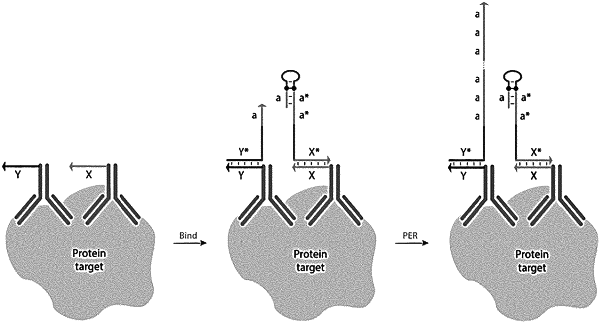| CPC C12Q 1/682 (2013.01) [C12Q 1/6804 (2013.01)] | 20 Claims |

|
1. A method of screening for a target molecule, the method comprising:
(a) contacting a first composition suspected of comprising a target molecule with a second composition, wherein the second composition comprises (i) a first target-binding molecule that binds specifically to a first epitope, (ii) a catalytic strand comprising a hairpin with a stem and a loop, wherein the catalytic strand binds to the first target-binding molecule, and wherein the catalytic strand comprises a molecule or modification that terminates polymerization, (iii) a second target-binding molecule that binds specifically to a second epitope, (iv) a concatemer-forming strand comprising a primer domain, wherein the primer domain is complementary to the stem, and the concatemer-forming strand binds to the second target-binding molecule, (v) a labeled imager strand that is complementary to the primer domain, (vi) a strand-displacing polymerase, and (vii) dNTPs; and
(b) detecting presence or absence of the labeled imager strand, wherein presence of the labeled imager strand indicates presence of the target molecule.
|